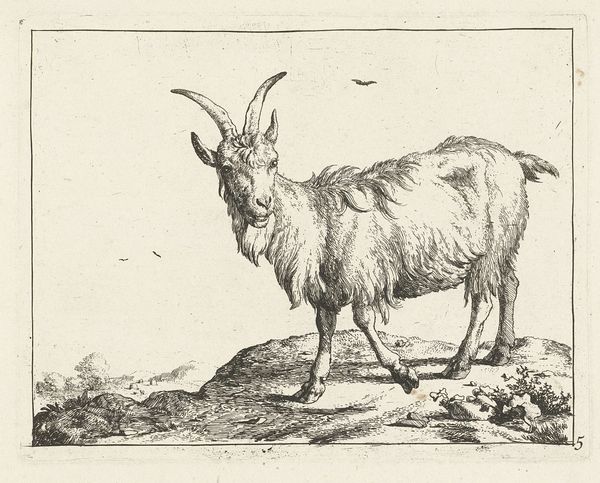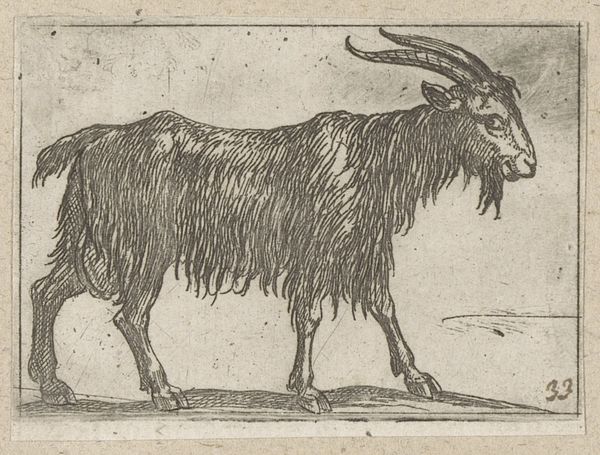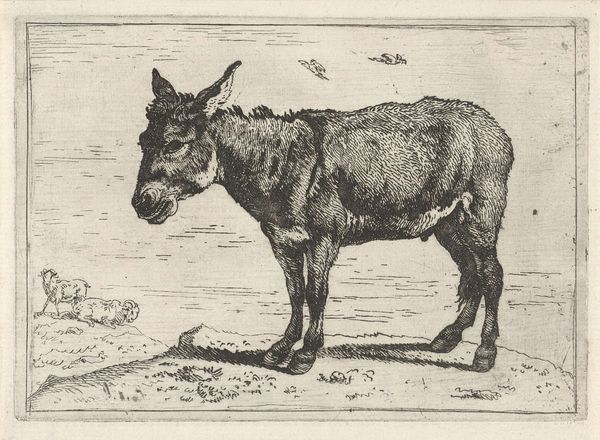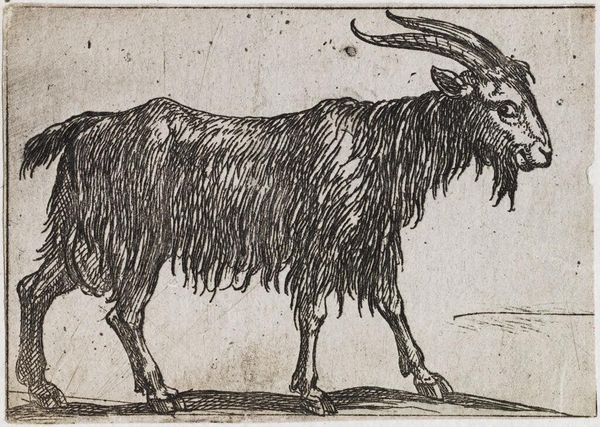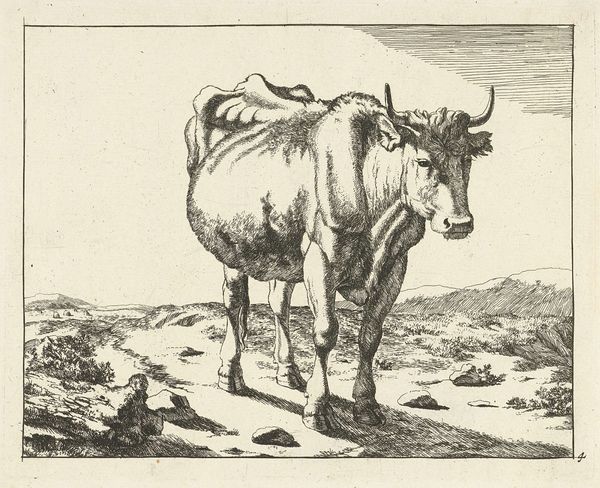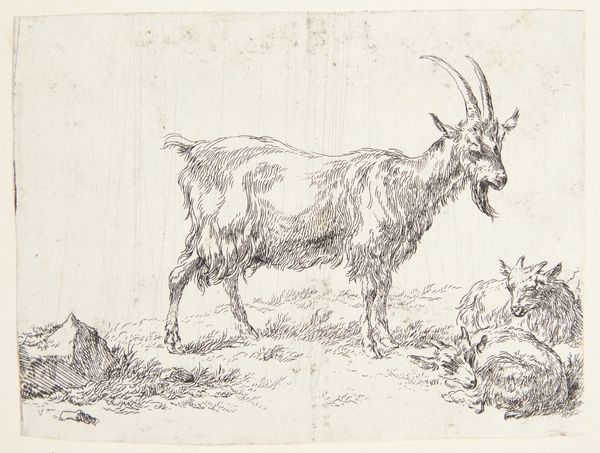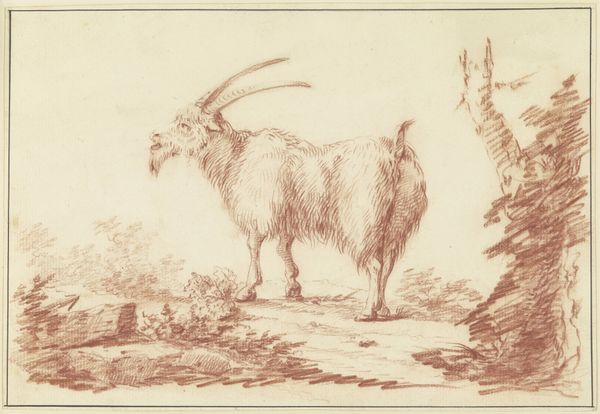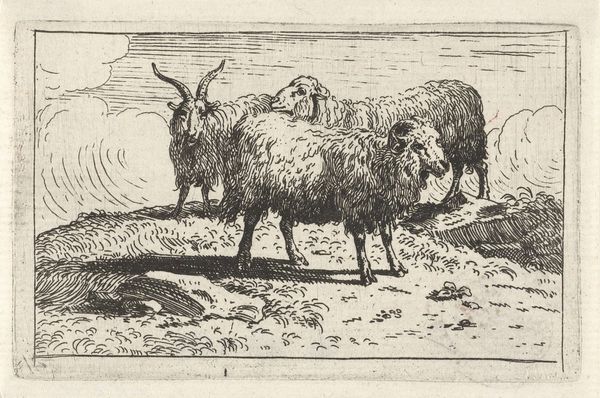
drawing, print, etching, engraving
#
drawing
#
baroque
#
animal
# print
#
pen sketch
#
etching
#
pencil sketch
#
landscape
#
figuration
#
line
#
engraving
#
realism
Dimensions: height 84 mm, width 108 mm
Copyright: Rijks Museum: Open Domain
This etching of a goat was made by Govert van der Leeuw in the Dutch Republic in the second half of the 17th century. Images of animals were popular at this time, reflecting a growing interest in the natural world and the rise of scientific observation. But consider the role of institutions in shaping artistic production and reception: The Dutch Republic was a major center of commerce, and the art market was thriving. Etchings like this were relatively inexpensive and could be widely distributed, making them accessible to a broad audience. The image itself creates meaning through visual codes and cultural references. The goat, a common farm animal, represents rural life and agricultural prosperity. The artist’s careful attention to detail, from the goat’s shaggy coat to its twisted horns, suggests a desire to capture the animal’s likeness accurately. As historians, we can use various resources, such as period documents and other artworks, to understand the social and institutional context in which this etching was made and to appreciate its significance as a cultural artifact.
Comments
No comments
Be the first to comment and join the conversation on the ultimate creative platform.
